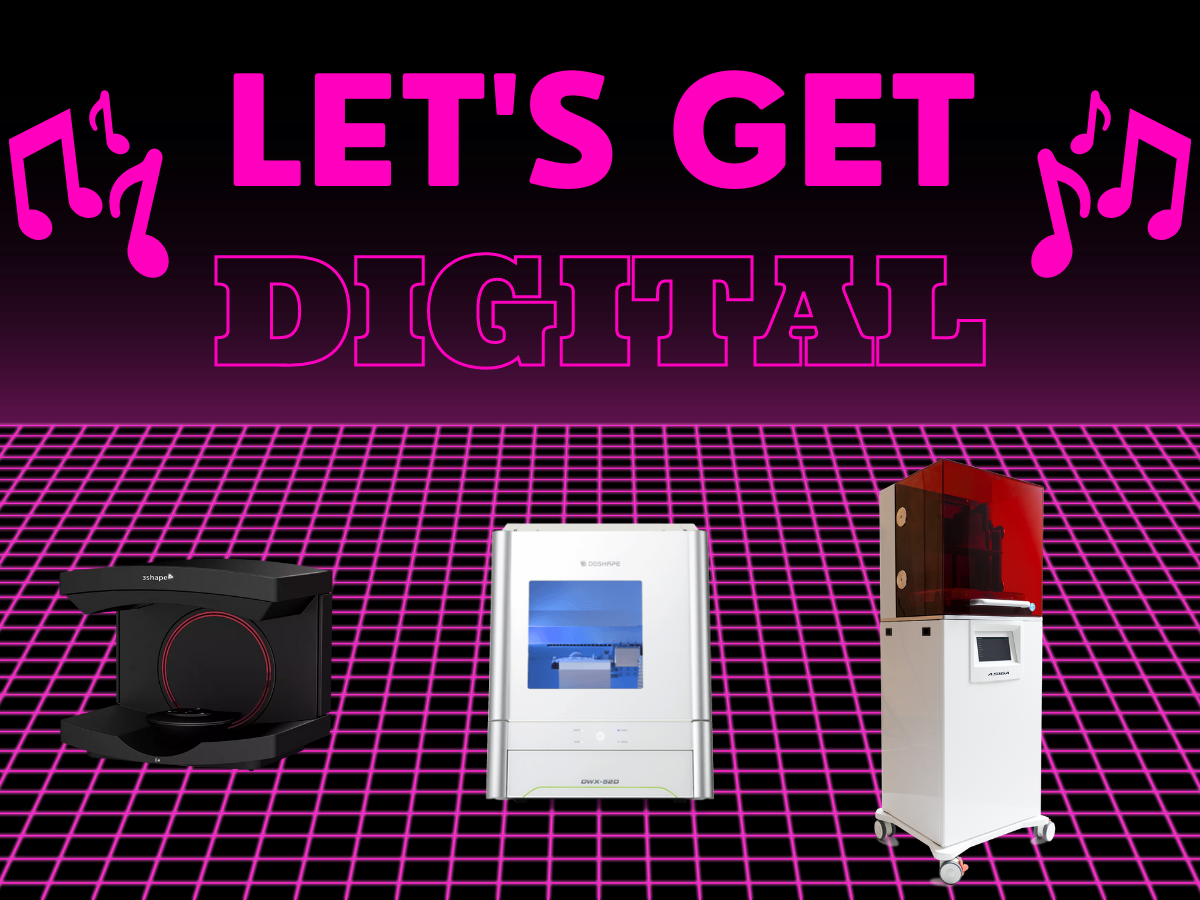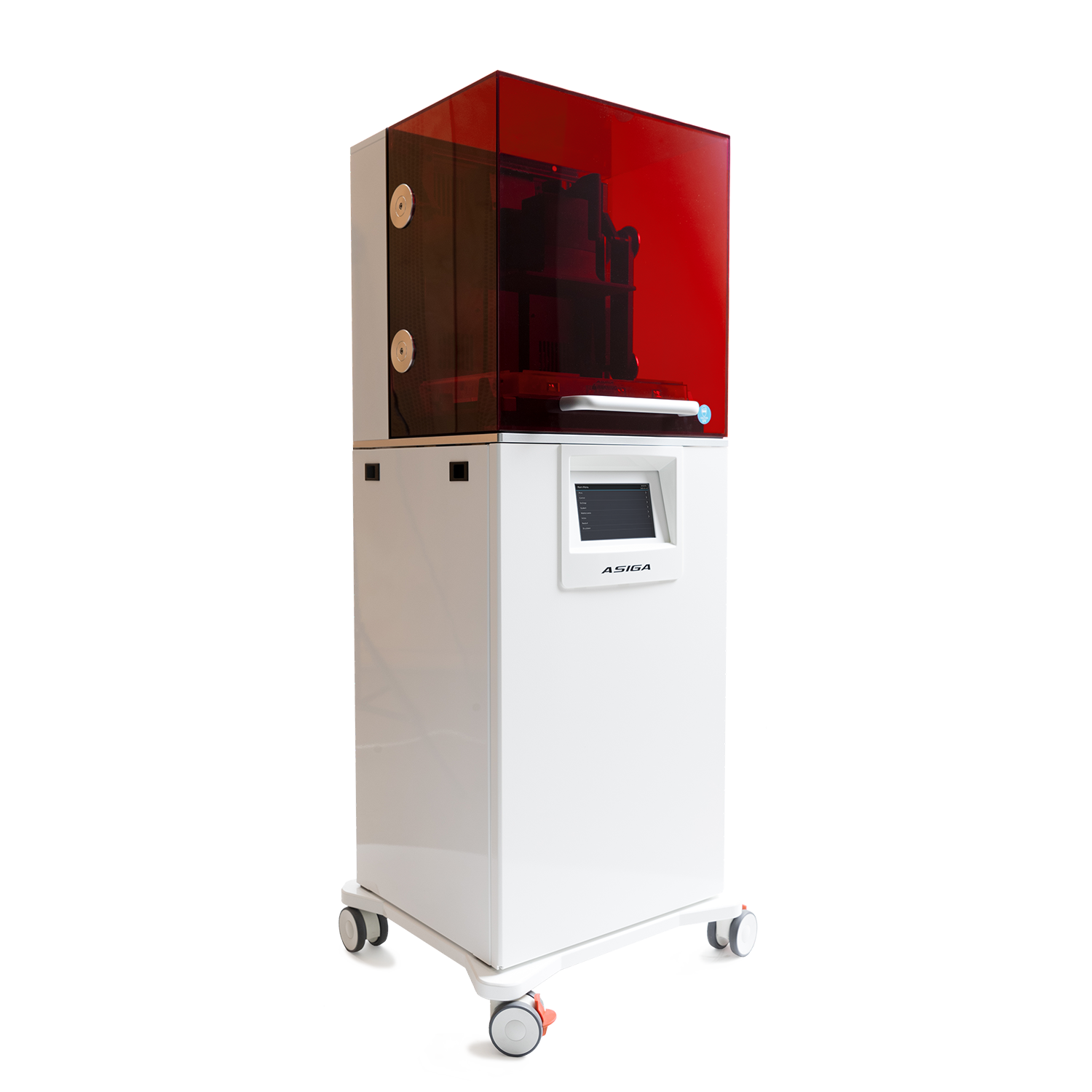 The list of laboratory owners exploring or already integrating 3D printing into their lab’s everyday workflows is growing dramatically in the dental laboratory industry. 3D printing, often referred to as rapid prototyping or additive manufacturing, has become a staple in dental laboratory technology.
The list of laboratory owners exploring or already integrating 3D printing into their lab’s everyday workflows is growing dramatically in the dental laboratory industry. 3D printing, often referred to as rapid prototyping or additive manufacturing, has become a staple in dental laboratory technology.
One of Whip Mix’s many progressive customers, Fager Dental Laboratory, found the need to incorporate the growing technology and participated in an eBook we created that incorporated the experiences of five dental labs.Fager Dental Lab., of Camp Hill, PA, was fast-becoming aware of how much more digital work they would be doing - especially in the implant arena, so the idea of having the technology accessibility and flexibility was very appealing. An open printer that accepts any material enabled them to research, then use the best materials for the practice’s applications.
The following blog, written by Charley Fager, BS, CDT and owner of the lab is taken from the eBook entitled How We Integrated 3D Printing: Stories from 5 Forward-thinking Dental Laboratories.
Our CAD CAM History
We were early adopters of milling technology for pressing/casting and were recognized by major companies for our achievements. They became very interested that we had worked out a complete digital workflow early on while most labs were still hand waxing. They could not believe the increase in our “numbers” (the amount of materials and supplies we were buying from them). On our side we made improvements gradually to understand and utilize the technology to produce high quality restorations. This was a major step forward years ago, but not without peril. Clients and employees had pre-conceived notions about what technology could do, both good and bad. The point of this introduction is that because we had the technology in-house rather than outsourcing (which might have been more cost effective initially), it allowed us to refine our designs, settings and work flow quickly. Being nimble in a competitive market is a huge advantage.
Using operation management methods, I determined that at certain volumes, printing patterns could be more efficient than milling. We had a small printer for castable copings and pressable full contour units. It was used to free up the mill for more zirconia. The printer had limitations, but let us become familiar with 3D printing technology. It was simply a step to purchasing a second mill. Any printed models that we needed were subcontracted to various outsource companies. I was never happy with the quality, expense and time for models to be received. Large format printers at that time were really only good for models that were not precise and not cost effective. We did not receive many digital impressions and lacked confidence in the workflow. Not having control of the printing process or material was very frustrating and did not help us to get more digital work.
Deciding to Purchase a 3D Printer
A turning point for us was deciding we would buy another printer a few years ago, when a major implant company developed a validated intraoral (IO) work flow for implants. All of our implants had a lab-based digital workflow anyhow, so it was a natural progression. The company that printed the models for us produced the best quality that I had ever seen. This was the new gold standard of printer material and performance. I thought that if I could find a printer that could deliver the material and precision we were looking for, without the issues of outsourcing, I would purchase it. None of the contemporary printers could come close to what I wanted. I paid for many samples and most of them disappointed me. We even milled some of our own models, but that held up the mills and the materials were horrible. There were new companies that had less expensive desktop printers, but their specifications and materials simply did not add up. They had proprietary materials and, despite their claimed specifications, produced poor results.
How We Decided
I presented this dilemma to Chris Frye at Whip Mix and he said they were evaluating the same process. He was the first person that actually listened to what I was saying and recognized my needs.
The Integration
About a year later Chris and Sherri called me concerning a new printer they were working with. They printed some samples. After evaluating basically every printer on the market, I knew this was the one. I almost didn't want to share this information because I think it is one of the most significant advantages that a digital laboratory can have. The Asiga Pro 2 has performed very well and has let us refine implant and digital model workflows that would have been impossible without actually having this printer. We can efficiently print models from every major intraoral scanner and implant company. This has enabled us to retain clients that would have gone elsewhere, and it has attracted many others. We make our clients’ investment in intraoral technology work!
Laboratories will have different goals for their printer
Some will print:
Whatever your 3D printer needs, the Asiga is versatile and can be adapted to the specific work flow that is ideal for your laboratory. Whip Mix has a proven record of working with dental laboratories and understands our needs. They have had to change as much as we have, and have made the commitment to succeed.
If it's time for you to consider 3D printing in your lab, check out the 3D printing webinar below. It will help you to decide what direction to go in.










.jpg)


Leave a comment